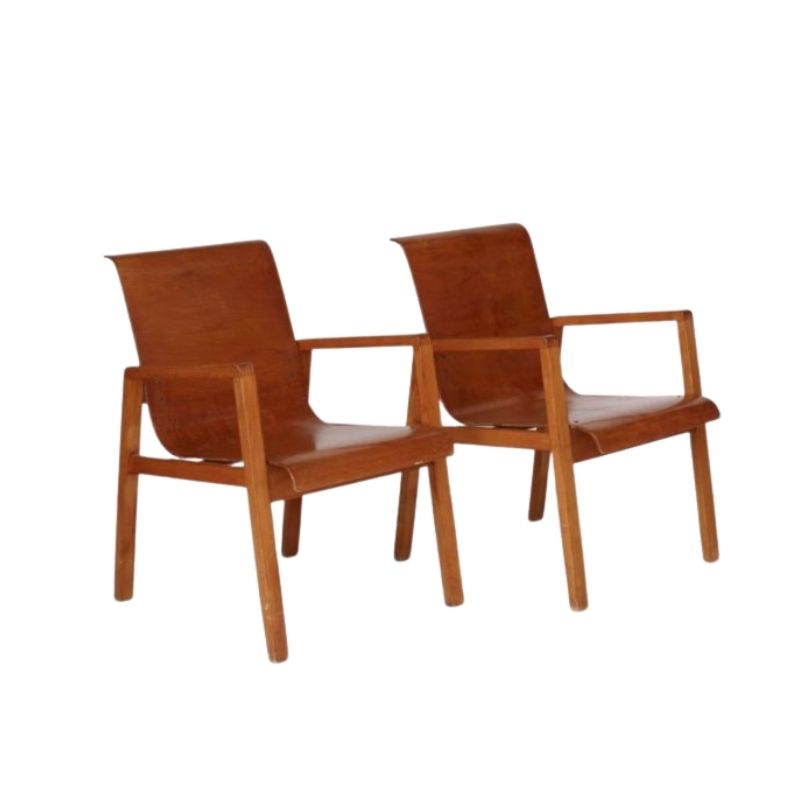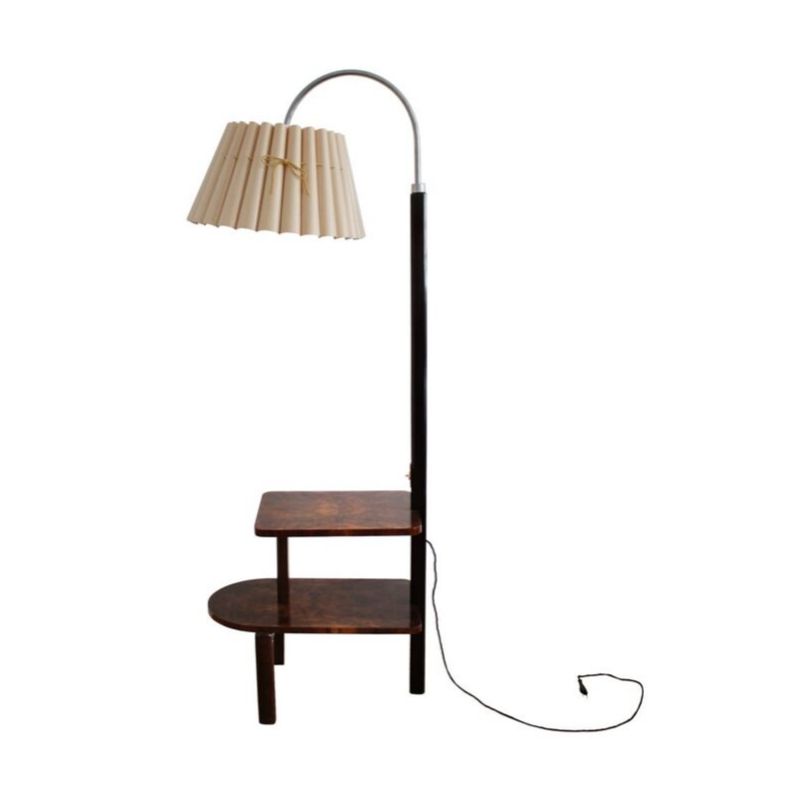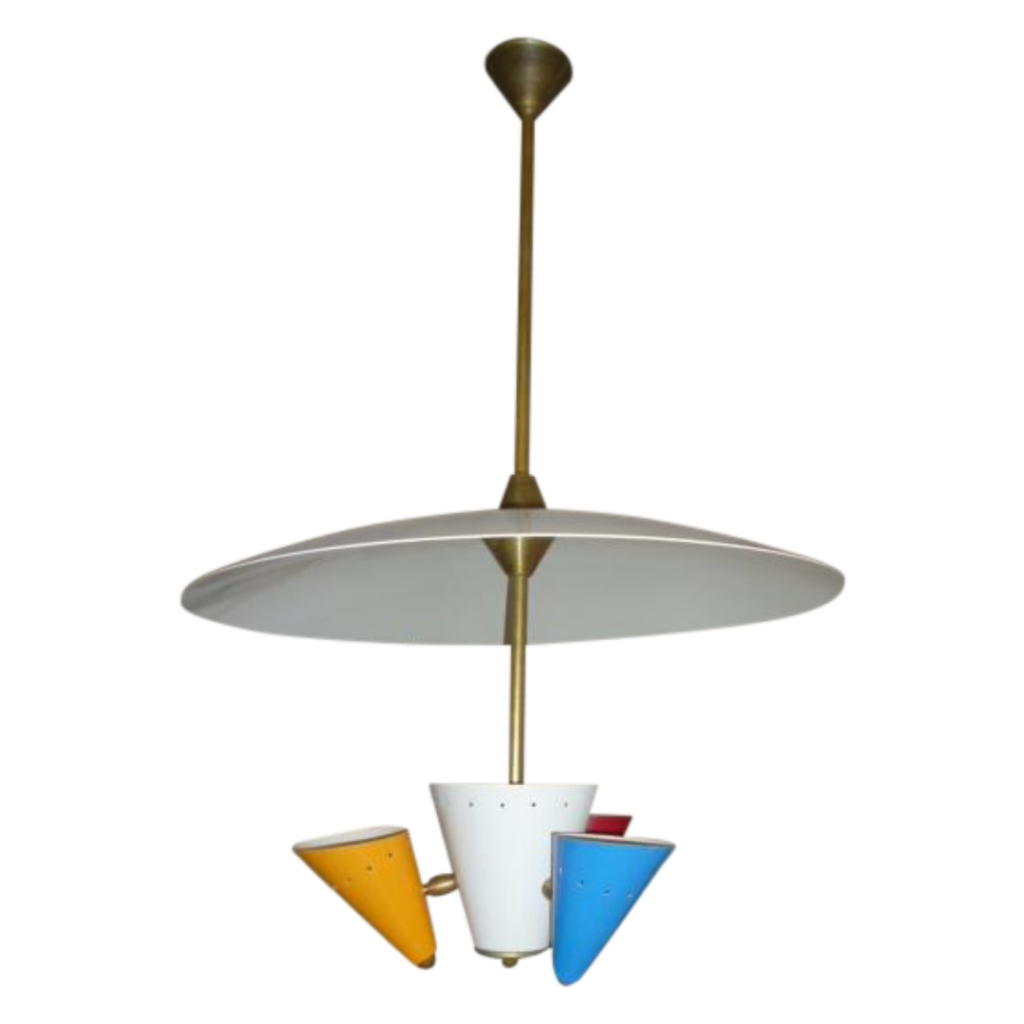Its official. The Zeitgeist of Neo Modern has passed into Baroque Geometric Formalism. I define it as the use of geometric forms not to reveal the essence of structure, but to hold one's eye for no reason. Dwell magazine is overflowing with the stuff now. Most popular neo-modernist furniture and products are composed of forms that are utterly disconnected from the function of the product. Neo Modern ends not with a bang but a meaningless form.
Sorry for the pessimism, but modernist design was supposed to get back basics, to purify the form language to fit the function. Whether that rule makes good sense, or not, at least the old modernist used to do it. Recent modernism is beginning to look like a geometric equivalent of auto amusement with forms, rather than a fusion of purified forms with rationalized function.
Help me, help me, help me, I think I'm going insane!
I don't know
if this will help, but I was enlightened by these words by Louis Menand in a recent New Yorker piece on someone called Donald Barthelme:
Postmodernism is the Swiss Army knife of critical concepts. It's definitionally overloaded, and it can do almost any job you need done. This is partly because, like many terms that begin with "post," it is fundamentally ambidextrous. Postmodernism can mean, "VVe're all modernists now. Modernism has won." Or it can mean, "No one can be a modernist anymore. Modernism is over." People who use "postmodernism" in the first, "mission accomplished," sense believe that modernism -- the art and literature associated with figures like Picasso and Joyce -- changed the game completely, and that everyone is still working through the consequences. Modernism is the song that never ends. Being postmodernist just means that we can never be pre-modernist again. People who use it in the second sense, as the epitaph for modernism, think that, somewhere along the line, there was a break with the assumptions, practices, and ambitions of modernist art and literature, and that everyone since then is (or ought to be) on to something very different. Being postmodernist means that we can never be modernist again.
http://www.newyorker.com/arts/critics/atlarge/2009/02/23/090223crat_atla...
Those flowers!
Those flowers!, I could be baroque, (or not) but never these flowers, I hate those flowers!
DCW said "I think I'm going insane!"
Don't worry, that's provably what's happening to the designers that are out there.
So the advice could be, take it easy-relax and enjoy the show, or well, come on go on go insane and enjoy yourself.
When you said baroque, In which example are you thinking on?
at least you said Baroque Geometric Formalism , which means that there is geometric form that support it. There are examples that really drives me mad that are literally surface. I mean those "flowers" added in the surface of anything as saying "Do you think I don't know? This is the last trend, I'll ad those flowers and everybody will know how trendy I will be! "
Now, being serious, I'll re-post something that it's clear to me to understand how things are going on:
"
There are TWO opinions on where are we now:
ONE, we are still in a post-modern period, that moves from neo-modernism, neo-clasicism neo-neo and minimalism and again other and other neo, but always under the shadow of the modernism (20's modernism) and seen on perspective always around a circular movement but in the same place again and again.
TWO, more optimistic, is that we don't have anymore only-one true. And could co-exist peacefully various small trends.
We could have at the same time minimalism and neo-pop-barroquism (!), and it's not justice not to mention so many variation on green , social if you want, etc etc. Is it that one of this in the future will be strong enough to emerge as the only new movement?. Or as happens in markets, and multi-polar-world we'll begin to live, will coexist many different trends, bigger for the masses and many smaller and different for those that doesn't feel that fits in those? (niche trends)
Wasn't artificial the idea of perfection world of modernism, that couldn't accept greys (just black and withe), and that idea of not accept the defect or the mistake? Only one perfect world for every body, (those that doesn't fit are imperfects to be fixed in the modern-mould"
Continuing with more flowers
About this "new" trend: (must have 3-4 years) I remember the first day I saw it said OK, after minimalism some kind of baroque was could be predicted second day every 'designer'(?) added to any design as photocopies, mid day of that second day I hated!,
Here in BAires we see them too, I ask my self why they don't draw some local flower at least!
If we have to live with some kind of barroque OK, but why this way?
THIS is the example in which I begin to suspect on " Zeitgeist ", I imagine reading in 10-20 years that barroquism after minimalism was the spirit of the time, of course!. NO!. I remeber perfectly how it was, first minimalism, then (perhaps waiting?) for barroquism, then appears that stupid baroquism, and millions of designers following as blind that trend. OR that Zeitgeist could be read as some kind of stupidity or how the marketing is ruling our societies, I don't know.
SDR, thanks, nice article. "Being postmodernist means that we can never be modernist again. ", so true, we fall in the same trap that modernism fall in 20's....
.....Once Koen said: "at that moment modern movement needed to liberate from classicism 'at any cost' ".
It's seems that today we fall in the same trap and we are trying to
"liberate from modernism 'AT ANY COST' ".
ps.: Who was the one that recommended as a guide a 'design philosophy'? 🙂
ps2: Nice to know that's still alive! long life to manifestos, 'design philosophy' will never die!
gustavo...
I have known only two Argentines from BAires--you and a fellow who moved to America. You both have amazing insight and amazing compassion. Civility is the word I am really searching for. Part of civility involves looking beyond the way a civilization is (usually quite uncivilized) and articulating how it could be to those whose vision is too calloused to see the obviously feasible, but not done. Thank you for your continued sharing with me.
SDR...
Thank you also for taking a moment to share something combining insight and healing. Barthelme was a very great writer whom few truly understand and appreciate the significance of. He bit into the apple of paradox as deeply as any writer ever. I feel about him the same way I feel about Robert Venturi in architecture. They are two exceedingly brave artists who dived deeply into complexity and contradiction for the rest of us. I am of their era in many ways. I understand them intuitively. And yet I believe it was a wrong road for civilization that ultimately lead to the starvation of authenticity and to disconnection of outer form, inner structure, and use that is at the core of social, political, economic and artistic incoherence in our civilization. Without this coherence, we wander aimlessly in a wilderness, , increasingly of our own making, as if someone has intentionally and irrationally and irresponsibly altered the survey benchmarks that allow us to know from whence we came and to where we might go. Outer form, inner structure, and purpose ought to exist in unity, not orchestrated disunity. Migration to multi-polarity in civilization means diversity, something quite beautiful, as anyone can see who looks at a wild meadow, or a groomed garden, in the spring. It does not (at least should not) necessarily coincide with the disconnection of outer form, inner structure, and purpose. I see complexity and contradiction in many things, but again complexity and contradiction may operate beautifully on one axis of order, without surrendering unity of outer form, inner structure and purpose on another axis. Human beings are capable of embracing complexity and contradiction, or high degrees of order, and are enriched by both IMHO. But the disconnection of outer form, inner structure and purpose lead to incoherence and I think this is bad for artists, bad for professionals, bad for citizens, bad for leaders, bad for producers, bad for civilization generally. David Byrne once wrote "Stop Making Sense." If doing so allows one to traverse to a more advanced coherence on the topology of the issue, fine. Otherwise, it is a dead end, even if it does sell on the shelves of Target and Williams Sonoma and even if it does win Pritgers.
If you need any help, please contact us at – info@designaddict.com









